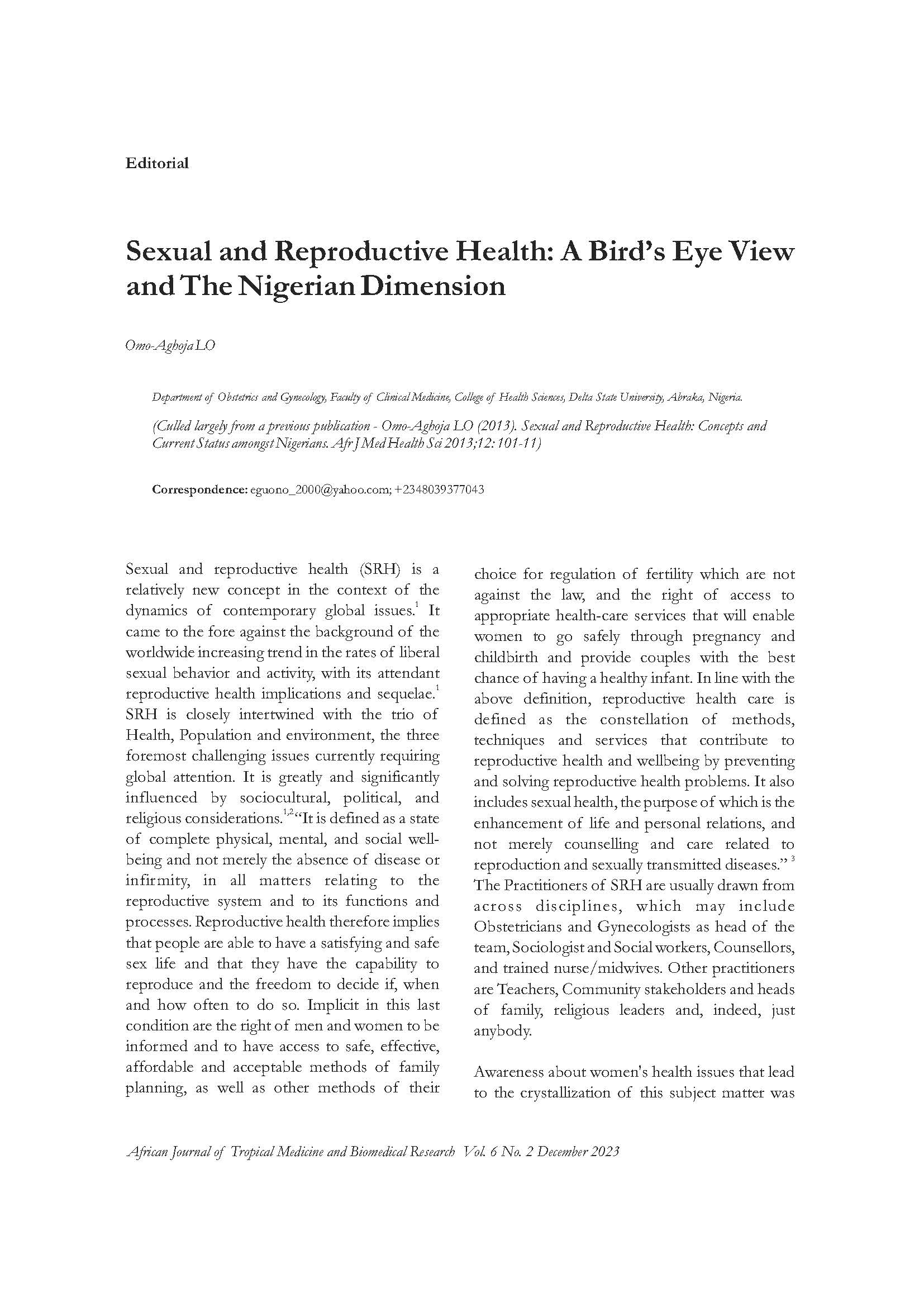Sexual and Reproductive Health
A Bird’s Eye View and The Nigerian Dimension
DOI:
https://doi.org/10.4314/ajtmbr.v6i2.1Keywords:
SexualReferences
UN Population Information Network (POPIN). Report of the international conference on population and development, Cairo, Sept 5-13, 1994, Oct 18, 1994. New York: United Nations, 1995: Sales No. 95.XIII.18 Available from: http://www.un.org/ popin/icpd/conference/o ff eng/poa.html [Las accessed on 2006 Aug 14].
Horton R. Reviving reproductive health. Lancet 2006; 368:1549.1595-1607.
Glasier A, Gülmezoglu AM, Schmid G, Garcia Moreno C, Van Look PF. Sexual and reproductive health: A matter of life and death. Lancet 2006; 368:1595-607.
Rosenfield A, Maine D. Maternal mortality — a neglected tragedy: Where is the M in MCH? Lancet 1985; 2:83-5.
Harrison K. Childbearing, health and social priorities: A survey of 22,774 consecutive hospital births in Northern Nigeria. Br J Obstet Gynecol 1985;92 (suppl 5):1-119.
Barbara S. Family Planning Saves Lives. 3rd Ed. In: Shane B, editor. Washington, D.C.: Population Reference Bureau; 1997. p. 1-24.
World Health Organization (WHO). In: Tompson A, editor. Safe motherhood. A newsletter of Worldwide Activity. Vol. 25, Issue 1. Geneva: World Health Organization (WHO); 1998. p. 6.
World Health Organization (WHO). Safe motherhood newsletter 3, no. 19. Geneva: World Health Organization; 1995. p. 1.
Langer A. Cairo after 12 years: Successes, setbacks, and challenges. Lancet 2006; 368:1552-4.
National Population Commission (NPC) [ Nigeria] and ICF Macro. Nigeria Demographic and Health Survey. Abuja, Nigeria: National Population Commission and ICF Macro; 2009.
Omo-Aghoja LO, Omo-Aghoja VW, Aghoja CO, Okonofua FE, Aghedo VO,Umueri C, et al. Factors associated with the knowledge, practice and perceptions of contraception in rural southern Nigeria. Ghana Med J 2009; 43:115-21.

Downloads
Published
Issue
Section
License
Copyright (c) 2023 African Journal of Tropical Medicine and Biomedical Research

This work is licensed under a Creative Commons Attribution-ShareAlike 4.0 International License.
Key Terms:
- Attribution: You must give appropriate credit to the original creator.
- NonCommercial: You may not use the material for commercial purposes.
- ShareAlike: If you remix, transform, or build upon the material, you must distribute your contributions under the same license as the original.
- No additional restrictions: You may not apply legal terms or technological measures that legally restrict others from doing anything the license permits.
For full details, please review the Complete License Terms.



